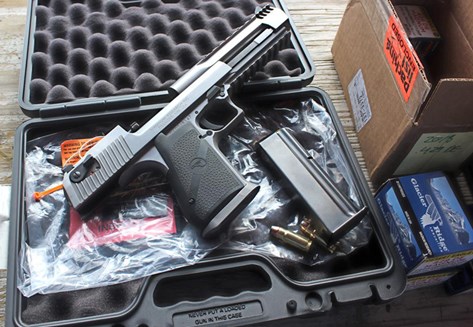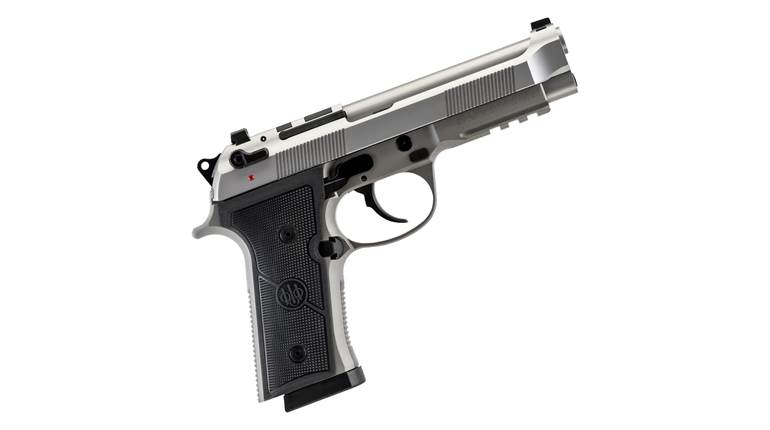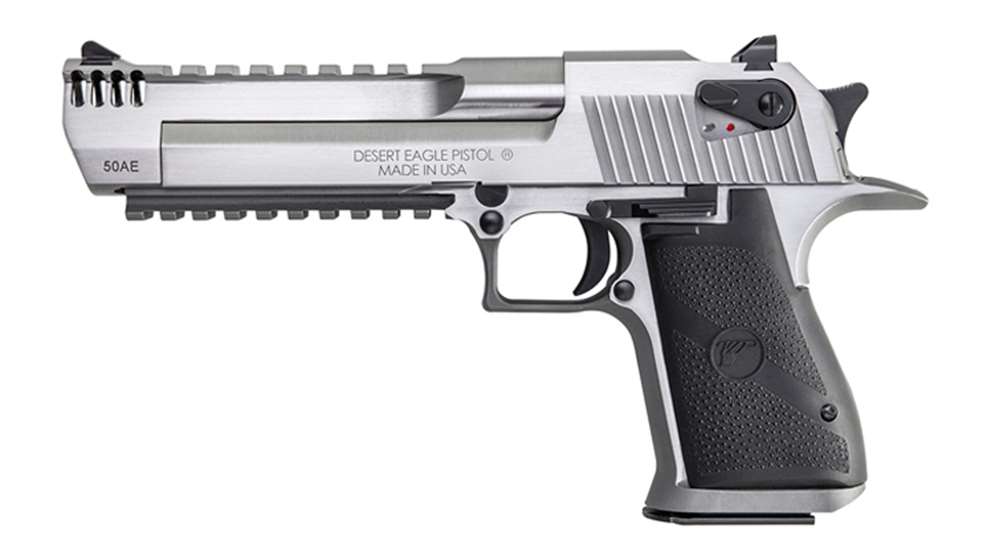
At the end of 2018, Magnum Research launched a cartridge called the .429 Desert Eagle, which is designed to boost the velocity potential in the company's massive Desert Eagle semi-automatic pistol. This bottle-neck round blends features borrowed from the famous .50 Action Express (.50 AE) semi-automatic pistol cartridge and the ubiquitous .44 Mag. revolver round to accomplish this task. However, this big-bore bottle neck is not a wholly new idea. To better understand the 429 DE, and why the company made it, it's helpful to dig into a bit of cartridge history and take a look at what came before.
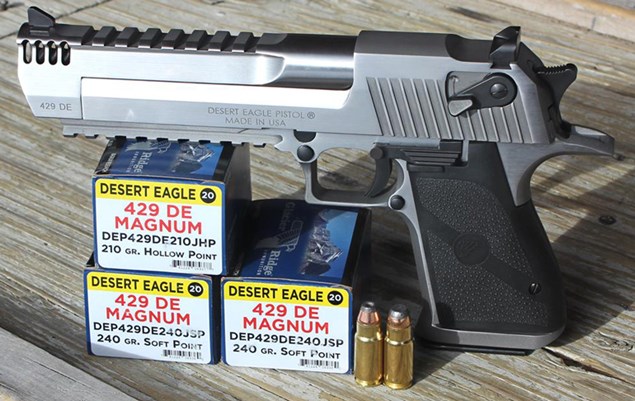
Evan Whildin of Action Arms developed the straight-walled, rebated-rim .50 AE back in 1988, which was first fired from the AMT Automag V pistol before finding its way into the chambers of the Desert Eagle semi-automatic. At first the .50 AE was topped with a .51-cal. bullet. However, BATFE regulations classify firearms with bores larger than 0.500" as destructive devices resulting in restricted sales within the United States. So, the bullet diameter was reduced to .50 caliber in order to meet Title 1 regulations.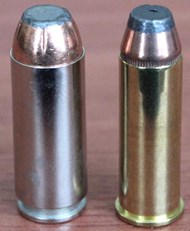
Just as the .500 S&W Mag. revolver round currently represents the maximum practical limits for wheelgun cartridge size, the .50 AE has yet to be dethroned as the largest semi-automatic pistol cartridge on the market today. Intended as a handgun hunting load, the .50 AE packs plenty of punch when fired from the Desert Eagle. Hornady's .50 AE 300-gr. XTP load has a listed velocity of 1475 f.p.s. for a muzzle energy of 1,449 ft.-lbs., but this pistol and cartridge combination is capable of even higher levels of muzzle energy. Because the case rim is the same size as that of the .44 Mag., it only requires a barrel and magazine swap to convert a .50 AE Desert Eagle to .44 Mag. and back again. This makes it an even more popular option with Desert Eagle fans.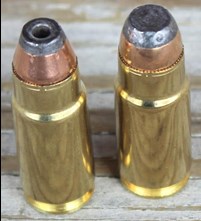
The .44 Rem. Mag., more commonly known as .44 Mag., was a reigning heavyweight champion in the handgun hunting category back in the late 1980s and remains a popular option today. This cartridge is topped with .429-cal. bullets (not .44 caliber, which is a story for another day) in a variety of weights and configurations. Hotter 240-gr. bullet loads ramped up to 1350 f.p.s. can produce 971 ft.-lbs. of energy. Compared to the .44 Mag., the introduction of the .50 AE represented a significant increase in handgun hunting power levels.
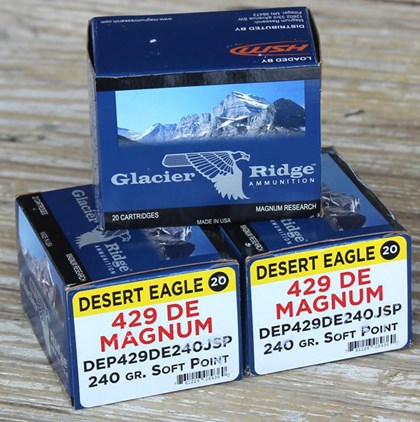
But as we all know, ammunition designers are prone to tin
kering and looking for new ways to squeeze more performance out of the rounds they make. Cor-Bon Ammunition did just that back in 1998 when it launched the .440 Cor-Bon cartridge. The .50 AE cartridge case was necked down to accept .429-cal. bullets with impressive results. When topped with a 240-gr. bullet, the flat-shooting .440 Cor-Bon launched at 1800 f.p.s. for 1727 ft.-lbs. of muzzle energy. That's an increase of 756 ft.-lbs. when compared to the .44 Mag. load listed above. When topped with a 305-gr. bullet, it scoots right along at 1600 f.p.s. for 1734 ft.-lbs. of energy, or 285 ft.-lbs. more than the Horandy 300-gr. XTP .50 AE load.
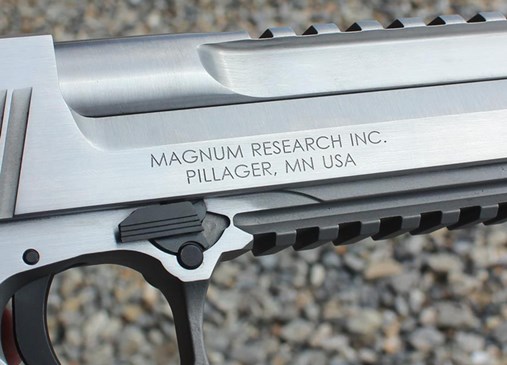
With its deeper penetrating performance potential, more common (and less expensive) bullets for hand loaders and Magnum research offering Desert Eagles and accessory barrels chambered for it, the .440 Cor-Bon should have been a smashing success. But here we are, two decades later and this cartridge is a nearly forgotten footnote in American ammunition history. What happened? In short, the cartridge didn't run reliably in the Desert Eagle semi-automatic. Unlike straight-wall revolver rounds, which headspace from the cartridge rim, the .440 Cor-Bon head spaces from the shoulder, meaning the ledge where the narrower neck meets the wider portion of the cartridge case. Cor-Bon had difficulty creating and holding the shoulder position on necked down .50 AE brass. These variations in external dimensions translated into varying head space which in turn resulted in poor reliability. It wasn’t long before Magnum Research discontinued their .440 Cor-Bon collaboration.
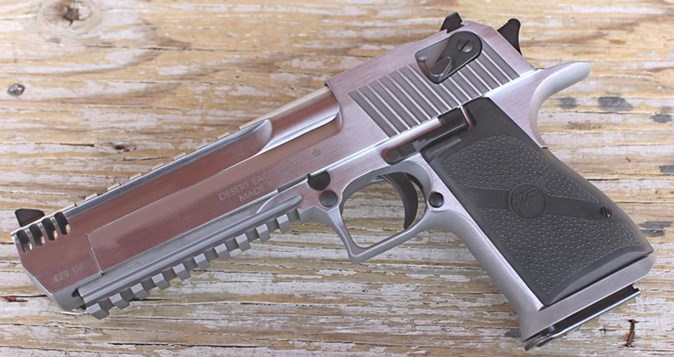
Although the first commercial attempt at a .429-cal. bottle-neck cartridge for the Desert Eagle didn't work, the idea didn't die out. Instead, the Magnum Research development team, including Jim Tertin, Magnum Research design and R&D lead, took it back to the drawing board to work out the kinks. Their efforts resulted in the 429 DE which provides the desired velocity boost without the reliability issues.
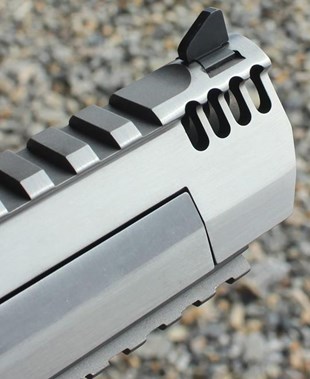
The first two loads are being manufactured by HSM Ammunition, using Starline Brass cases, for distribution by Magnum Research as part of the company’s Glacier Ridge product line. The brass cases feature a 30-degree shoulder with an elongated neck to provide enough room for a tight bullet crimp so that the bullets will not slip out from the case while riding along in the pistol's magazine. The 240-gr. soft point load leaves the barrel at a listed velocity of 1600 f.p.s. for a muzzle energy of 1364 ft.-lbs. while the 210-gr. hollow point flies right along at 1700 f.p.s. for 1347 ft.-lbs. of energy.
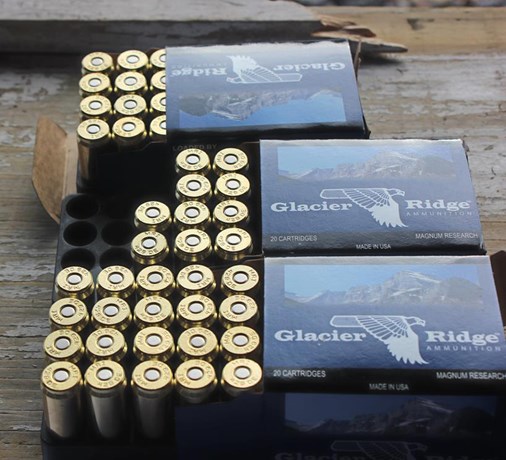
To see this new cartridge in action, I requested a 6" stainless steel Desert Eagle for a range test. This particular model weighs in at 4 lbs. 8.6 oz. with an empty 7-round magazine. It sports drift-adjustable target sights, black appointments, a milled-in accessory rail along the dust cover and a rubber grip. Eight slot-shaped ports are milled into the muzzle of the barrel to reduce muzzle flip.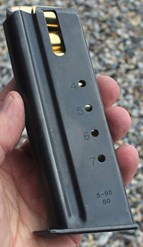
What I noticed right away is that the 429 DE, while stout, does not produce the same levels of often intense felt recoil in the Desert Eagle as the same size models chambered for the .50 AE. It was enjoyable to work with from a two-handed standing position because the recoil was on par with a hot .357 Mag. or light load .44 Mag. Accuracy was similar to other Desert Eagles I've fired with 5-shot groups around 2" in size at this distance.
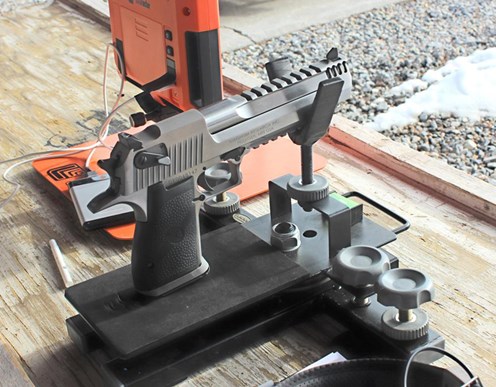
Although the accuracy and felt recoil reports are important, it was the velocity information I was most interested in. Based on 10-shot strings fired next to a Lab Radar chronograph with a 12" offset from the muzzle, the 240-gr. load had an average muzzle velocity of 1537 f.p.s. for a muzzle energy of 1259 ft.-lbs. The 210-gr. load launched at 1647 f.p.s. for 1265 ft.-lbs. of energy. That's a drop of 63 and 53 f.p.s., respectively. My guess is that a non-ported 6" barrel will narrow or eliminate this relatively small velocity gap.
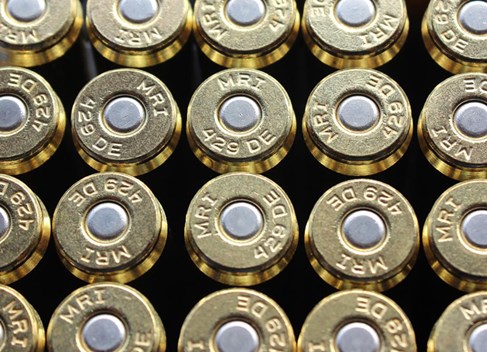
The unveiling of new cartridges can be interesting events, especially niche cartridges like the 429 DE. One has to wonder how customers are going to respond to it. For those who are concerned about a repeat of the .440 Cor-Bon reliability issues, it appears that Magnum Research has those problems licked. As mentioned earlier, this cartridge was designed by Magnum Research specifically for the Desert Eagle pistol. This time around, one company is managing both the pistol and the ammunition production processes to ensure positive results. Based on my time at the range, I found the 429 DE provides plenty of handgun hunting performance without the punishing recoil of the 50 AE. For more information, visit magnumresearch.com.
